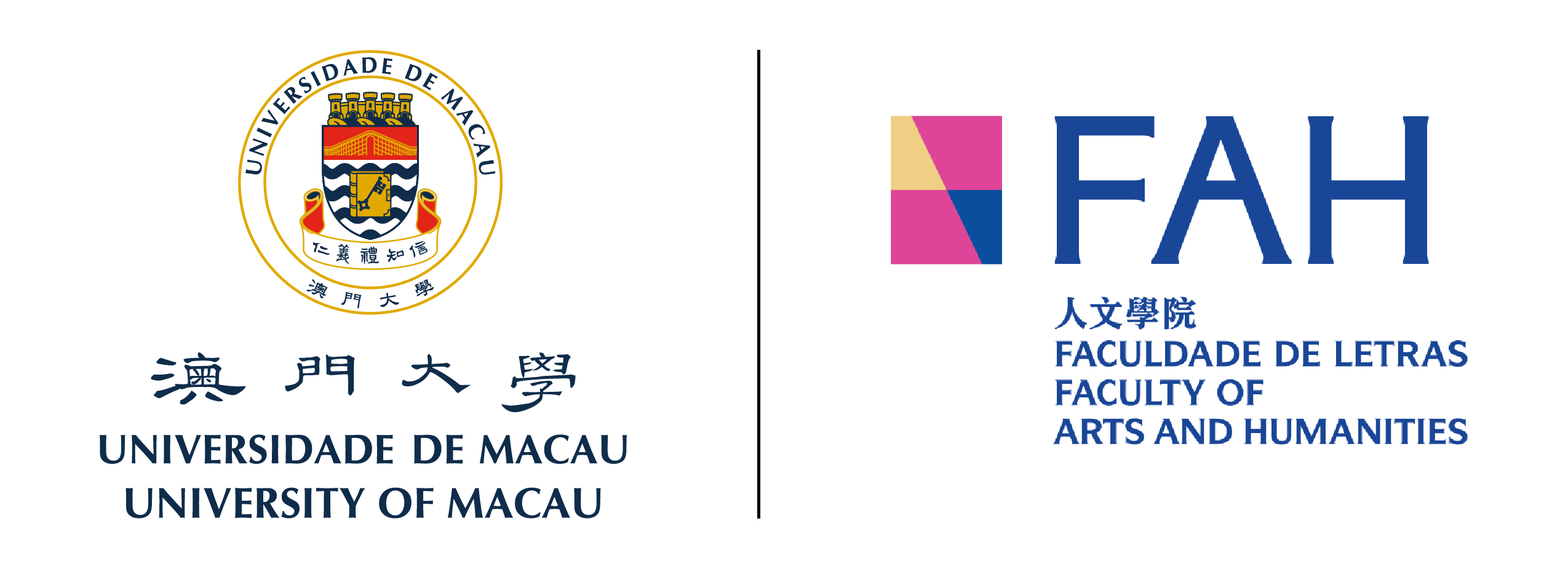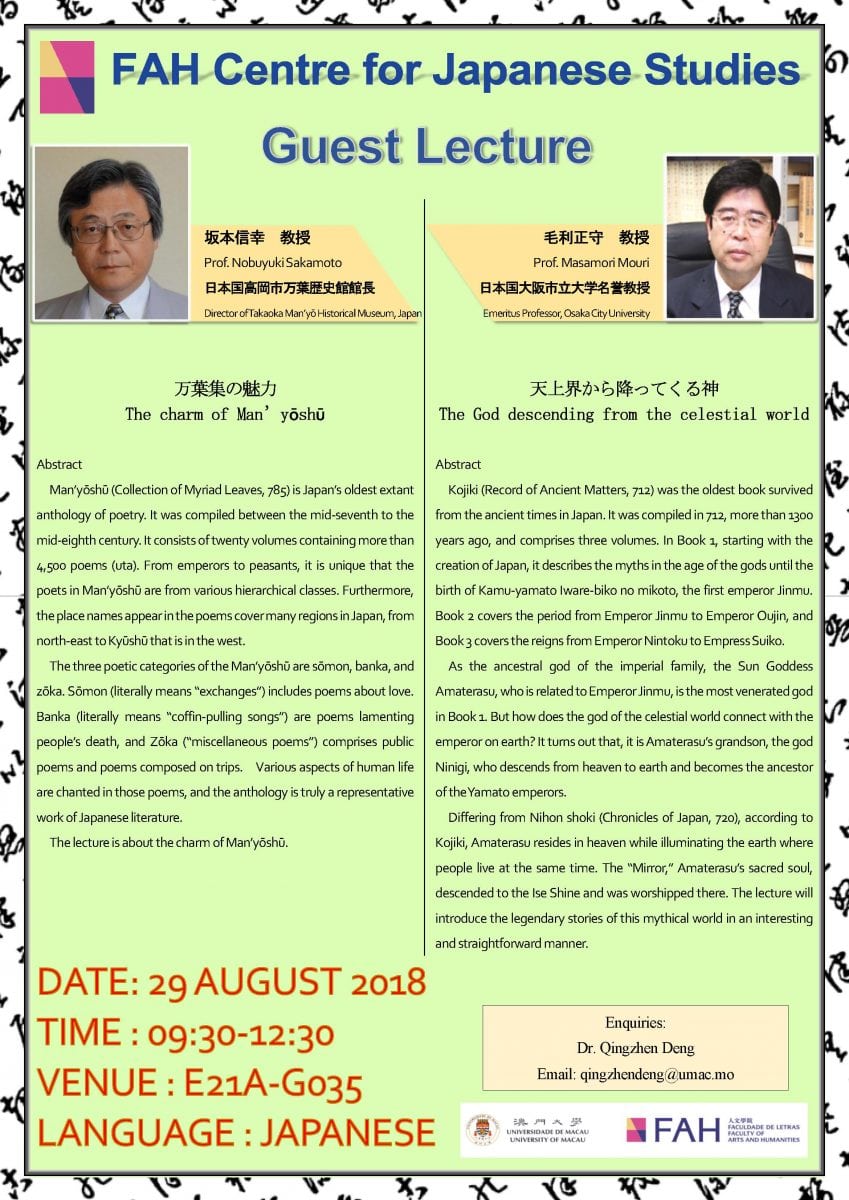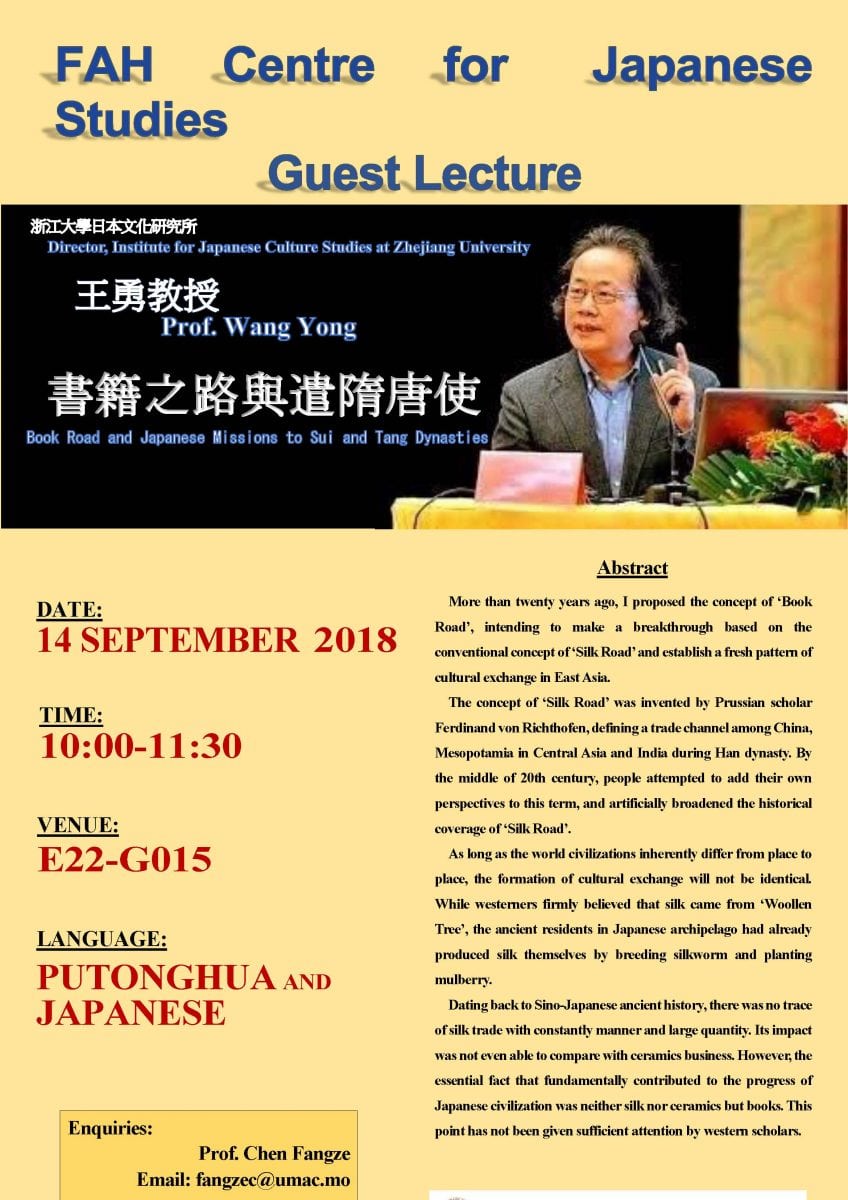Calendar of Events
M Mon
T Tue
W Wed
T Thu
F Fri
S Sat
S Sun
0 events,
0 events,
1 event,
FAH Centre for Japanese Studies ~ Guest Lectures
FAH Centre for Japanese Studies ~ Guest Lectures
万葉集の魅力 The charm of Man’yōshū Prof. Nobuyuki Sakamoto Abstract Man’yōshū (Collection of Myriad Leaves, 785) is Japan’s oldest extant anthology of poetry. It was compiled between the mid-seventh to the mid-eighth century. It consists of twenty volumes containing more than 4,500 poems (uta). From emperors to peasants, it is unique that the poets in Man’yōshū are from various hierarchical classes. Furthermore, the place names appear in the poems cover many regions in Japan, from north-east to Kyūshū that is in the west. The three poetic categories of the Man’yōshū are sōmon, banka, and zōka. Sōmon (literally means “exchanges”) includes poems about love. Banka (literally means “coffin-pulling songs”) are poems lamenting people’s death, and Zōka (“miscellaneous poems”) comprises public poems and poems composed on trips. Various aspects of human life are chanted in those poems, […]
0 events,
0 events,
0 events,
0 events,
0 events,
0 events,
0 events,
0 events,
0 events,
0 events,
0 events,
0 events,
0 events,
0 events,
0 events,
1 event,
FAH Centre for Japanese Studies ~ Guest Lecture
FAH Centre for Japanese Studies ~ Guest Lecture
Book Road and Japanese Missions to Sui and Tang Dynasties 書籍之路與遣隋唐使 Prof. WANG Yong Abstract More than twenty years ago, I proposed the concept of ‘Book Road’, intending to make a breakthrough based on the conventional concept of ‘Silk Road’ and establish a fresh pattern of cultural exchange in East Asia. The concept of ‘Silk Road’ was invented by Prussian scholar Ferdinand von Richthofen, defining a trade channel among China, Mesopotamia in Central Asia and India during Han dynasty. By the middle of 20th century, people attempted to add their own perspectives to this term, and artificially broadened the historical coverage of ‘Silk Road’. As long as the world civilizations inherently differ from place to place, the formation of cultural […]



